Antonello da Messina (1430 – 1479)
Get a Messina Certificate of Authenticity for your painting (COA) for your Messina drawing.
For all your Messina artworks you need a Certificate of Authenticity (COA) in order to sell, to insure or to donate for a tax deduction.
Getting a Messina Certificate of Authenticity (COA) is easy. Just send us photos and dimensions and tell us what you know about the origin or history of your Messina painting or drawing.
If you want to sell your Messina painting or drawing use our selling services. We offer Messina selling help, selling advice, private treaty sales and full brokerage.
We have been authenticating Messina and issuing certificates of authenticity since 2002. We are recognized Messina experts and Messina certified appraisers. We issue COAs and appraisals for all Messina artworks.
Our Messina paintings and drawings authentications are accepted and respected worldwide.
Each COA is backed by in-depth research and analysis authentication reports.
The Messina certificates of authenticity we issue are based on solid, reliable and fully referenced art investigations, authentication research, analytical work and forensic studies.
We are available to examine your Messina painting or drawing anywhere in the world.
You will generally receive your certificates of authenticity and authentication report within two weeks. Some complicated cases with difficult to research Messina paintings or drawings take longer.
Our clients include Messina collectors, investors, tax authorities, insurance adjusters, appraisers, valuers, auctioneers, Federal agencies and many law firms.
We perform Antonello da Messina art authentication, appraisal, certificates of authenticity (COA), analysis, research, scientific tests, full art authentications. We will help you sell your Antonello da Messina or we will sell it for you.

Antonello da Messina was a Sicilian painter active during the Italian Renaissance. Antonello was born at Messina around 1429-1431, to Giovanni de Antonio Mazonus and Garita (Margherita). He was probably apprenticed in his native city and in Palermo.
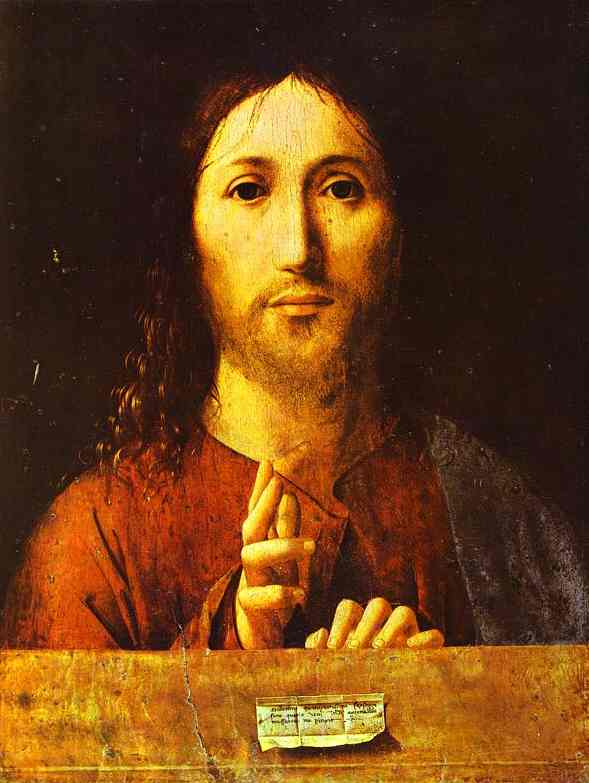
Around the year 1450, he was at Naples, then one of the most active centers of Renaissance Art. According to a 1524 letter, while there he was a pupil of the painter Niccolò Colantonio.
Around 1455 he painted the so-called Sibiu Crucifixion, which was inspired by the Flemish Calvaries and is housed in the Muzeul de Artà in Bucharest. Of the same years is the Crucifixion in the Royal Museum of Antwerp: his early works shows a marked Flemish influence, but it is not clear whence this inspiration came. According to his biographer Vasari, he saw at Naples an oil painting by Jan Van Eyck (the “Lomellini Tryptych”) belonging to King Alphonso of Aragon, and, being struck by the peculiarity and value of the new method, set out for The Netherlands to acquire a knowledge of the process from Van Eyck’s disciples. However, the story of the Dutch travel is largely rejected by contemporary scholars.
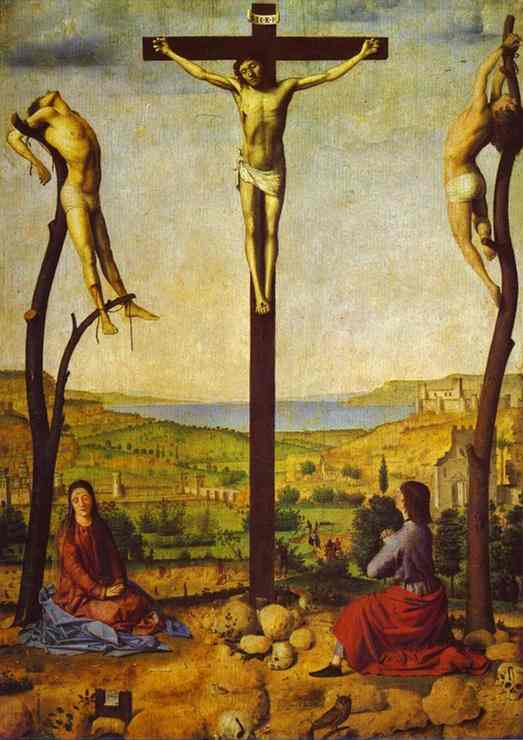
Two years later Antonello received his first commission as an independent artist, a banner for the Confraternita di San Michele dei Gerbini in Reggio Calabria. At this date, he was already married, and his son Jacobello was already born.

In 1460, his father is mentioned leasing a brigatine to bring back Antonello and his family from Amaltea, a town in Calabria. In that year, Antonello painted the so-called Salting Madonna, in which standard iconography and Flemish style are backed by a greater attention in the volumetric proportions of the figures, probably coming from his knowledge of some works by Piero della Francesca. Also from around 1460 are the two small panels depicting Abraham Served by the Angels and St. Jerome Penitent now in the Museo Nazionale della Magna Grecia in Reggio Calabria. In 1461 his younger brother Giordano entered Antonello’s workshop, signing a three-years contract. Of that year is a Madonna with Child for the Messinese nobleman Giovanni Mirulla, now lost.
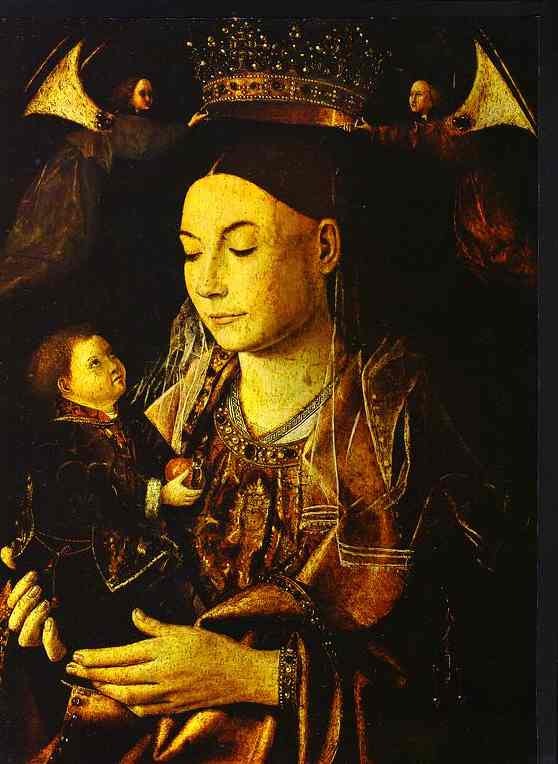
Between 1465-1470, Antonello finished a Portrait of a Man now at Cefalù. His portraits are noteworthy for his characteristic use of the three-quarter view, typical of the Flemish School, whereas almost all Italian painters adopted the medal profile pose. Antonello traveled to Venice around 1470, to see Giovanni Bellini’s paintings.
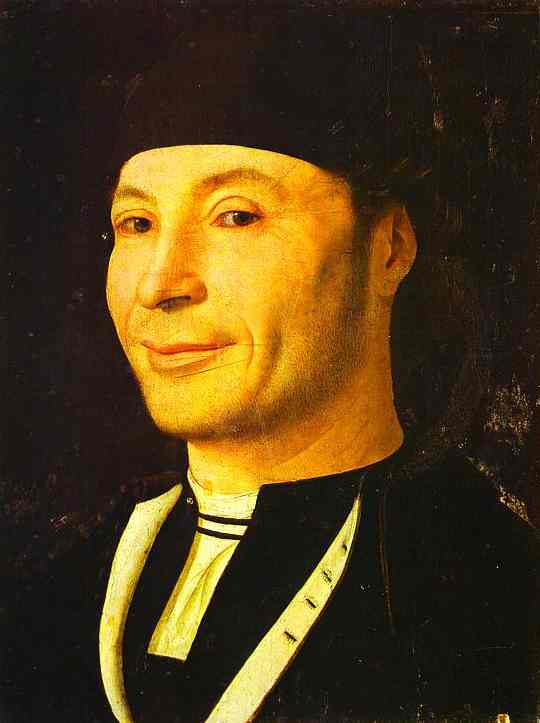
In this year he executed his first signed and dated work, the Salvator Mundi. Back at Sicily, Antonello finished the St. Gregory’s Polyptych.
In 1474, he painted the Annunciation, now in Syracuse, Italy, and the St. Jerome in His Study, one of his most famous paintings. The following year he began his regular sojourn to Venice, where he remained until the fall of 1476. His works of this period begin to show a greater attention to the human figure, regarding both anatomy and expressivity, according to the influence of Piero della Francesca and Bellini.
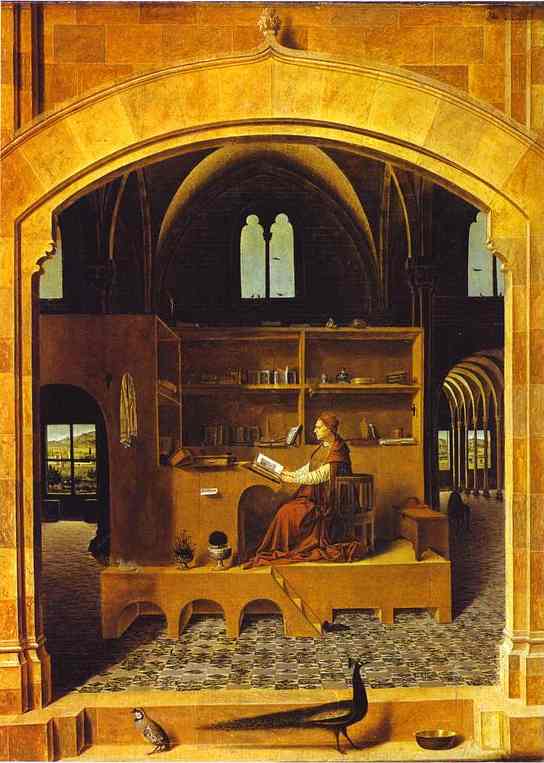
His most famous pictures dating from this period include the Condottiero (Louvre), the San Cassiano Altarpiece and the St. Sebastian (see selected works for details).Antonello returned briefly in Sicily in 1476, where he painted the famous Virgin Annunciate, now in the Palazzo Abatellis at Palermo.
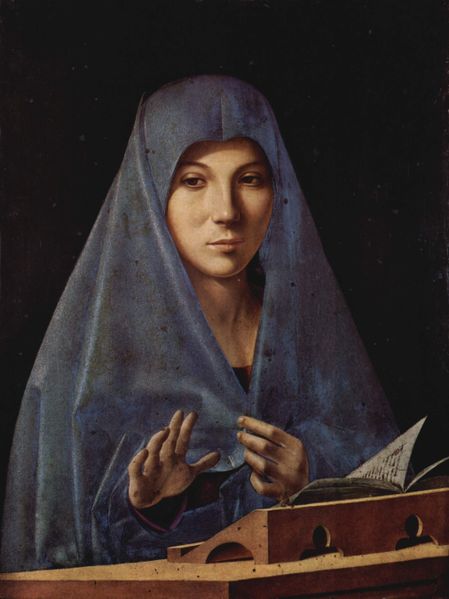
He died at Messina in 1479: his testament dates from February of that year, and he is documented as no longer alive two months later. Some of his last works remained unfinished, but were completed by his son Jacobello.
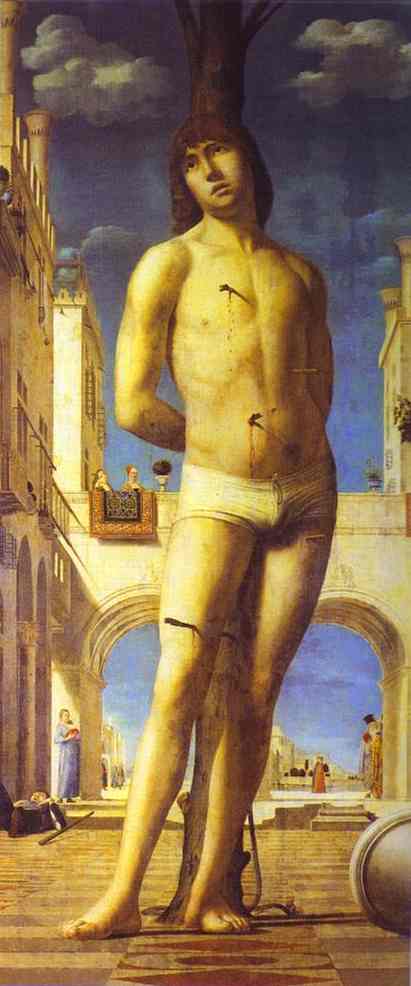
Antonello’s style is remarkable for its union, not always successful, of Italian simplicity with Flemish love of detail. He exercised an important influence on Italian painting, not only by the introduction of the Flemish invention, but also by the transmission of Flemish tendencies. However, no school of painting formed after his death, with the exception of the Sicilian Marco Costanzo
Selected works:
• Sibiu Crucifixion (1455) – Muzeul de Artà, Bucharest
• Crucifixion (1455) – Oil on panel 52.5 x 42.5 cm, Koninklijk Museum voor Schone Kunsten, Antwerp
• Abraham Served by the Angels – Museo della Magna Grecia, Reggio Calabria
• St. Jerome Penitent – Various techniques on wood, 40.2 x 30.2 cm, Museo della Magna Grecia, Reggio Calabria
• Portrait of a Man (1474) – Oil on wood, Staatliche Museen, Berlin
• Madonna with Child (Salting Madonna) – Oil on wood, 43.2 x 34.3 cm, National Gallery, London
• Portrait of a Man (1474) – Oil on wood, 32 x 26 cm, Staatliche Museen, Berlin
• St Jerome in His Study (c. 1474) – Oil on wood, 46 x 36,5 cm, National Gallery, London
• Portrait of a Man (Il Condottiere) (1475) – Oil on wood, 35 x 38 cm, Musée du Louvre, Paris
• Crucifixion (1475) – Wood, 42 x 25,5 cm, National Gallery, London
• Portrait of a Man (c. 1475) – Oil on wood, Galleria Borghese, Rome
• Portrait of a Man (c. 1475) – Oil on panel, 36 x 25 cm, National Gallery, London
• Portrait of a Man (1475-1476) – Oil on panel, 28 x 21 cm, Museo Thyssen-Bornemisza, Madrid
• San Cassiano Altarpiece (1475-76) – Oil on panel, Kunsthistorisches Museum, Vienna
• The Dead Christ Supported by an Angel (1475-78) – Panel, 74 x 51 cm, Museo del Prado, Madrid
• Christ at the Column (c. 1475-1479) – Oil on wood, 25,8 x 21 cm, Musée du Louvre, Paris
• Virgin of the Annunciation -Oil on panel, Alte Pinakothek, Munich
• Portrait of a Man (1476) – Oil on panel, Museo Civico d’Arte Antica, Turin
• Virgin Annunciate (c. 1476) – Oil on wood, 45 x 34,5 cm, Museo Nazionale, Palermo
• St. Sebastian (1477-1479) – Oil on canvas transferred on table, 171 × 85 cm, Gemäldegalerie Alte Meister, Dresden
• Portrait of a Young Man (c. 1478) – Panel, 20.4 x 14.5 cm, Staatliche Museeun, Berlin
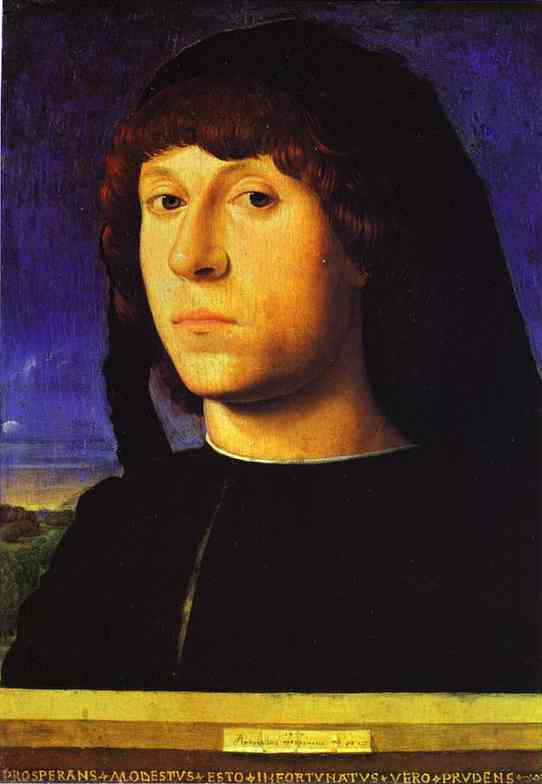
Still wondering about an Italian painting in your family collection? Contact us…it could be by Antonello da Messina.
Reviews
1,217 global ratings
5 Star
4 Star
3 Star
2 Star
1 Star
Your evaluation is very important to us. Thank you.
